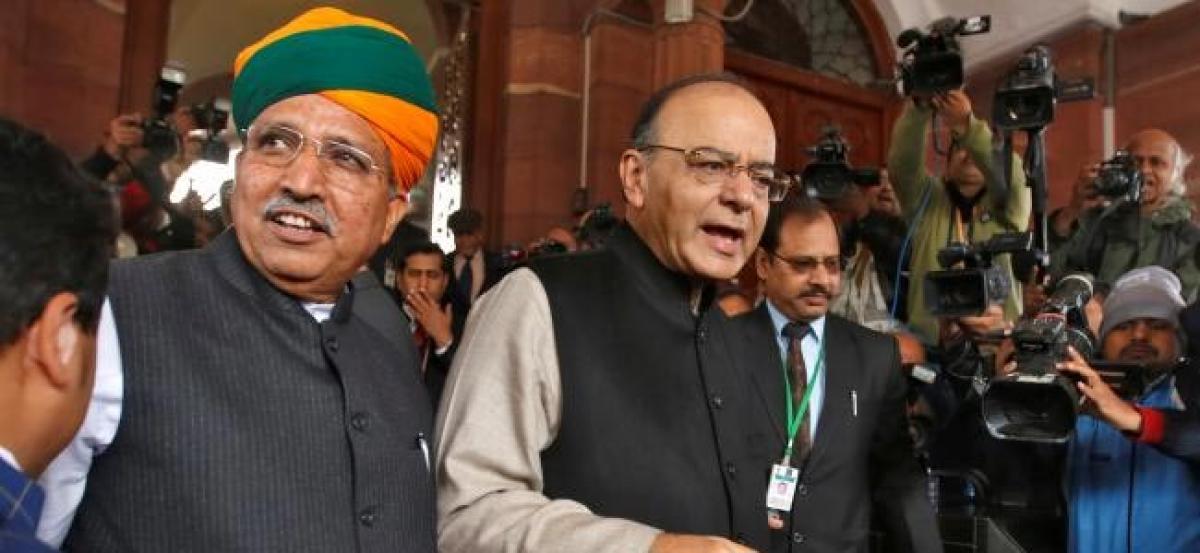Live
- Gold rates in Hyderabad today surges, check the rates on 15 November, 2024
- Gold rates in Vijayawada today surges, check the rates on 15 November, 2024
- Kartika Purnima 2024: A Festival of Spiritual Significance and Cultural Celebration Across India
- Children’s Rights Day celebrated grandly
- YSRCP forms spl teams to support social media activists
- AI-driven dataset to reveal new insights around diabetes
- Nurturing curiosity, empathy & innovation in children
- Vizianagaram MLC bypoll cancelled
- Governor Abdul Nazeer pays tributes to Pandit Nehru
- AP Assembly session continues for fourth day, discussion on budget today
Just In

India stuck to a previously planned injection of $1.5 billion for state-owned banks in the coming financial year, disappointing hopes for a broader recapitalization and fuelling concern that some may trim lending to keep afloat.
MUMBAI: India stuck to a previously planned injection of $1.5 billion for state-owned banks in the coming financial year, disappointing hopes for a broader recapitalization and fuelling concern that some may trim lending to keep afloat.
In his budget speech on Wednesday, Finance Minister Arun Jaitley reiterated an earlier plan to put 100 billion rupees into the banks during the fiscal year that begins in April.
Even though Jaitley said the government would provide banks with additional capital if needed, some of those who had hoped for a bigger recapitalization sum were left disappointed.
"Given certain banks are under significant stress, naturally one would have expected that the government would have augmented the capital injection," said Saswata Guha, a director at Fitch Ratings.
"While they can do that anytime, including it in the budget adds a degree of seriousness, and also adds clarity."
Bank stocks shook off the disappointment, rallying in an overall strong market where the main index .NSEI ended up 1.8 percent, as Jaitley unveiled several incentives for companies, geared toward boosting spending on infrastructure and developing the rural economy.
A move to allow banks higher tax benefits on bad loan provisions was also seen as positive.
BAD DEBTS
While the government estimates the two dozen banks majority-owned by the state need about $27 billion in new capital to meet global Basel III banking rules expected to take full effect by March 2019, private economists and analysts peg it much higher.
Fitch Ratings estimates the capital requirement, including that of private sector lenders, at about $90 billion. About 80 percent of that will have to be met in the next two financial years, Guha said.
India is injecting 700 billion rupees ($10.4 billion) into the banks in four years to March 2019. With just 200 billion rupees of that left over the next two financial years, many fear the existing recapitalization plan will fall well short.
State-run lenders that account for nearly 70 percent of India's banking assets are not favorites of external investors, with $127 billion in soured loans by June - and weak profits. Several reported losses last year after a clean-up ordered by the central bank drove up their bad-loan provisions.
Adding to their woes, the government's shock move in November to replace about 86 percent of currency in circulation will delay the clean-up of bad loans beyond a March 2017 deadline, bankers and analysts say.
With limited capital and large bad-loan provisions, some weaker banks will have to stop making new loans, hurting the broader economy reliant on such loans to fund projects. Credit growth is also hovering near two-decade lows.
"It looks like the government wants the banks to improve efficiency and raise capital through internal resources," said an executive director at a mid-sized state-run bank.
"If today my bank is not in a position to have adequate core equity capital as per Basel III norms, what will I do?" he added. "I will not increase my advances, but I'll try to recover my non-performing assets."

© 2024 Hyderabad Media House Limited/The Hans India. All rights reserved. Powered by hocalwire.com







